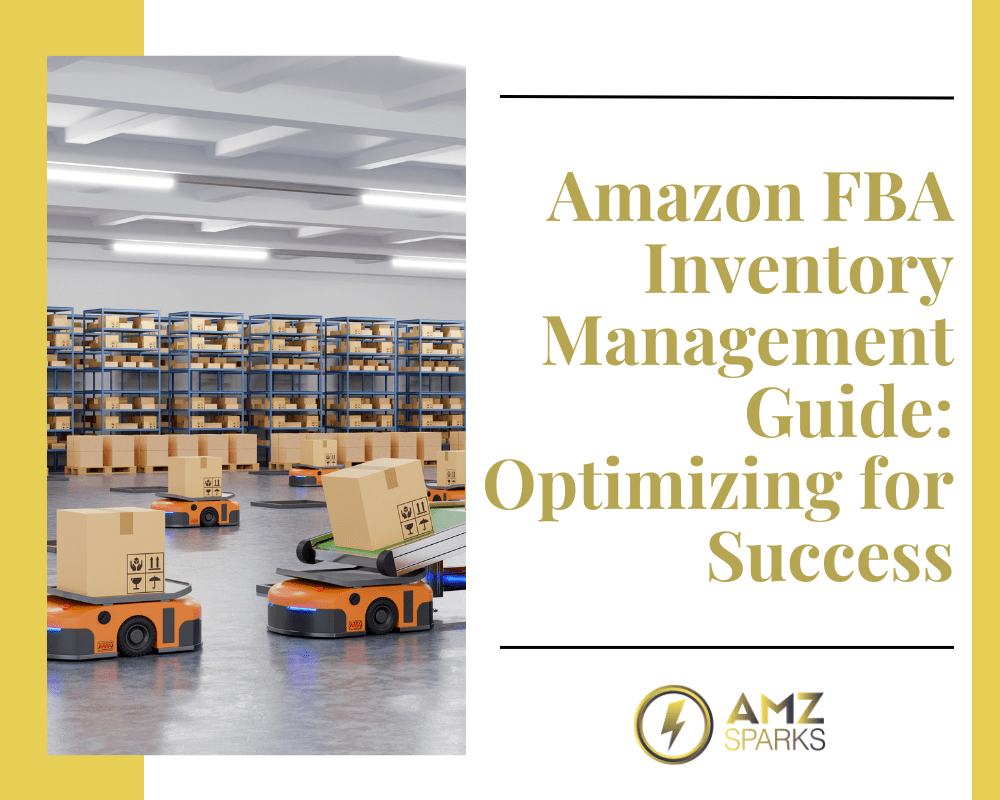In the dynamic e-commerce landscape, Amazon FBA (Fulfillment by Amazon) stands out as a game-changer for sellers. Whether you’re a seasoned seller or just starting, Amazon Inventory Management is pivotal to maximizing sales and ensuring customer satisfaction. This guide will walk you through SEO-optimized insights and strategies to make the most of Amazon FBA inventory management. Amazon’s e-commerce platform has forever transformed the landscape of online selling. However, to truly succeed on this platform, sellers must understand how to efficiently manage inventory on Amazon. This comprehensive guide dives deep into the intricacies of inventory management on Amazon, offering you tried-and-tested strategies to optimize your success
Also Read: How to Sell on Amazon Without Inventory
Table of Contents
Introduction: The Importance of Effective Inventory Management
Amazon Inventory management isn’t just about ensuring you’ve got products to sell; it’s a delicate balancing act. Stock too much, and you’re paying unnecessary storage fees. Stock too little, and you risk going out of stock, potentially losing sales and affecting your store’s reputation. This balance becomes even more crucial with Amazon FBA, given its specific fee structures and storage limitations. Efficient inventory management on Amazon can lead to maximized profits, improved seller metrics, and enhanced customer satisfaction.
Deciphering the Amazon FBA Model
Before diving deep into how to manage inventory on Amazon, it’s crucial to understand what Amazon FBA is:
Fulfillment by Amazon (FBA) allows sellers to store their products in Amazon’s warehouses. Once a customer places an order, Amazon handles storage, packing, shipping, and even customer service and returns. This hands-off approach offers sellers more freedom but demands precise inventory management to ensure profitability.
Also Read: 10 Proven Marketing Strategy of Amazon to Boost Your Sales
Core Components of Inventory Management on Amazon
1. Demand Forecasting:
To manage inventory on Amazon effectively, you need to anticipate the demand for your products. Consider:
- Historical sales data.
- Seasonal trends.
- Market analysis.
2. Stock Replenishment:
Ensuring you always have products available involves:
- Calculating lead times.
- Monitoring sales velocity.
- Setting up low-stock alerts.
3. FBA Storage Costs:
Amazon charges storage fees based on the space your products occupy in their warehouses. Being aware of these costs and the long-term storage fees is essential for profitability.

Strategies to Optimize Amazon Inventory Management
1. Leverage Amazon’s In-built Tools:
Tools like the Inventory Performance Index (IPI) provide insights into how effectively you’re managing your fba inventory on Amazon. An optimal IPI score means lower storage fees and higher profit margins.
2. Automated Reordering Systems:
Modern inventory management tools integrated with Amazon can automatically reorder stock based on preset parameters, ensuring you never run out.
3. Managing Slow-moving Stock:
Identify products that aren’t selling quickly. Consider bundling them with faster-moving items, offering discounts, or even using Amazon’s advertising to boost their visibility.
Also Read: Finding Profitable Niches for Private Labeling on Amazon: Research and Analysis
Common Pitfalls in Amazon FBA Inventory Management
Avoiding common mistakes can save costs and boost profitability:
1. Overstocking:
Holding too much stock can lead to increased storage fees and even long-term storage fees if items stay in Amazon’s warehouse for too long.
2. Understocking:
Running out of stock not only leads to lost sales but can also hurt your organic ranking on Amazon.
3. Ignoring Data:
Not utilizing the plethora of data Amazon provides can lead to missed optimization opportunities.
Why is Manage Inventory on Amazon Critical in FBA?
Effective inventory management goes beyond just keeping products in stock. It’s about:
- Ensuring you don’t overspend on excess stock.
- Minimizing storage fees.
- Avoiding stockouts which could hurt your Seller Performance Metrics and, by extension, your visibility on the platform.
- Improving cash flow by not tying up funds in unsold goods.
Key Elements of Amazon FBA Inventory Management
- Demand Forecasting: Use historical sales data, combined with market trends and seasonality, to predict future product demand. Tools like Google Trends or Amazon’s own Brand Analytics can offer valuable insights.
- Stock Replenishment: Reorder stock based on lead times and sales velocity. Leveraging Amazon’s Inventory Planning tool can provide actionable recommendations.
- FBA Storage Fees & Costs: Understand Amazon’s storage fee structure, including long-term storage fees, to optimize your inventory turnover and minimize costs.
- Listing Optimization: Ensure your product listings are keyword-rich, with high-quality images and informative descriptions. This directly influences sales velocity and, therefore, inventory decisions.
- Also Read: The Ultimate Prime Day Playbook: Unleash a Selling Frenzy and Watch Your Profits Skyrocket!
Conclusion
Understanding how to effectively manage inventory on Amazon is pivotal for any seller aiming for success on the platform. From forecasting demand, and optimizing stock levels, to understanding FBA’s fee structures, each aspect plays a crucial role in a seller’s profitability and success. As e-commerce continues to grow, sellers equipped with the knowledge and strategies to optimize their inventory management will stand head and shoulders above the competition.
In the competitive realm of Amazon selling, optimized inventory management can be the difference between modest sales and soaring success. By leveraging Amazon’s tools, staying informed on trends, and regularly assessing your strategies, you’re on the path to FBA success.
